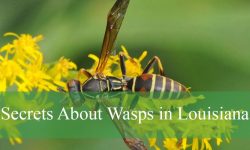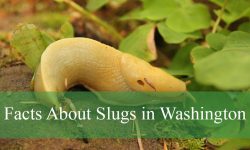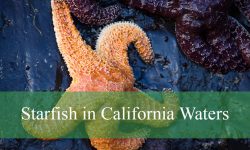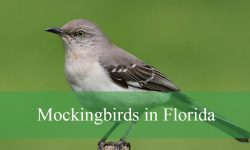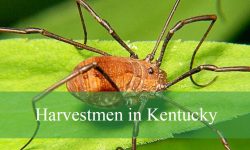As the moon rises over Delaware Bay, the tide pulls softly against the shore. In the silvery light, hundreds of shapes begin to emerge from the water — ancient, armored creatures slowly crawling onto the sand. Their shells glisten like polished stone, and their movements seem almost prehistoric. These are horseshoe crabs, living fossils that have survived for more than 450 million years.
Every spring, they arrive in staggering numbers along Delaware’s beaches — a timeless ritual that predates humanity itself. To watch them spawn beneath the stars is to witness an unbroken thread of life stretching deep into Earth’s history.
But beyond this spectacle lies a story few truly know: a tale of survival, science, and connection between species that depend on these ancient mariners for their very existence. The horseshoe crabs in Delaware are not only symbols of endurance — they are vital links between ocean, shore, and sky.
Meet Delaware’s Ancient Mariners

Not True Crabs at All
Despite their name, horseshoe crabs are not true crabs. They are more closely related to spiders and scorpions than to lobsters or blue crabs. Belonging to the class Merostomata, their scientific name, Limulus polyphemus, translates roughly to “the many-eyed odd creature.”
Their body is divided into three parts: the prosoma (front shell), opisthosoma (rear section with gills and spines), and telson (the long, pointed tail). Contrary to popular belief, that tail isn’t a weapon — it’s a steering and righting tool, helping them flip over if stranded on their backs.
These remarkable creatures have changed little in hundreds of millions of years, surviving mass extinctions that wiped out dinosaurs. The horseshoe crabs in Delaware are living links to a prehistoric world that once teemed with trilobites and ancient fish.
Where They Live
Delaware Bay is the largest spawning site for horseshoe crabs in the world, drawing millions of individuals every year. They favor the gentle, sandy beaches between Cape Henlopen and Cape May, where the shallow waters and tidal patterns create ideal nesting conditions.
For most of the year, they remain in deeper coastal waters, burrowing into the seafloor. But as May and June bring warmer temperatures and full moons, the crabs migrate inland, guided by instinct older than humanity.
The arrival of horseshoe crabs in Delaware is a phenomenon so vast that it shapes the rhythms of the entire ecosystem — even determining when thousands of migrating shorebirds stop to feed during their journeys.
Anatomy and Adaptation
Built for Survival
At first glance, a horseshoe crab might look like a relic of the past — an armored shield crawling from another era. But every curve and segment of its body serves a purpose.
Their tough exoskeleton protects them from predators and turbulent waves. Beneath the shell lies a complex array of gills, muscles, and specialized limbs that allow them to crawl, swim upside down, and even “walk” on the seafloor.
Each of the five pairs of legs ends in pincers used for grasping and moving food toward the mouth, which is located on the underside of the body. Interestingly, they cannot chew; instead, they crush and grind their food using bristle-covered legs.
Their blue blood, one of their most remarkable traits, contains copper-based hemocyanin, which turns bright blue when oxygenated. This unique biology would one day make horseshoe crabs in Delaware indispensable to modern medicine.
The Eyes That See It All
The horseshoe crab has ten eyes — each with its own function. Two large compound eyes sit on the shell, capable of detecting motion and light, while smaller eyes on the underside help them orient in the dark.
Some eyes are even sensitive to ultraviolet light, allowing them to navigate using the moon’s reflection on the water. This extraordinary vision system helps them find mates during nocturnal spawning events.
In scientific research, these primitive yet powerful eyes have provided valuable insights into how vision evolved — making horseshoe crabs as important to biology as they are to medicine.
The Night of the Horseshoe Crabs
The Spawning Ritual
Every May and June, the beaches of Delaware Bay come alive with one of the most extraordinary natural events in North America. Under the light of the full and new moons, thousands of horseshoe crabs crawl ashore to lay and fertilize eggs.
Females, larger than males, dig small pits in the sand to deposit up to 100,000 pea-sized, pale green eggs in clusters. Males cling to the females’ shells using special front claws, fertilizing the eggs as they’re laid.
For a few days, the beaches pulse with life — the clicking of shells, the wash of waves, and the soft moonlight reflecting off millions of moving bodies.
This ancient rhythm, repeated for millions of years, remains one of the most spectacular sights in the natural world.
Life Beneath the Sand
After a few weeks, the eggs hatch into tiny trilobite-like larvae that drift into the bay’s shallow waters. Many are quickly eaten, becoming food for fish, birds, and crabs. The survivors grow slowly, molting 15–20 times before reaching adulthood — a process that takes nearly 10 years.
The young horseshoe crabs in Delaware spend their early years hidden in muddy flats, gradually developing their hard shells and adapting to the ever-changing coastal conditions.
Their long journey from egg to adult is a delicate cycle that mirrors the tides themselves — always moving, always returning.
Horseshoe Crabs and Delaware’s Ecosystem
The Shorebird Connection
Perhaps the most astonishing part of this story is how the horseshoe crabs in Delaware sustain another miracle of nature: the annual migration of shorebirds, particularly the Red Knot (Calidris canutus rufa).
Each spring, Red Knots travel from the tip of South America to the Arctic — one of the longest migrations in the animal kingdom. Their survival depends on the crab eggs laid in Delaware Bay.
As the crabs spawn, millions of eggs wash ashore, forming a rich food supply that fuels the birds for their final flight north. Without the crabs’ eggs, many Red Knots would perish before reaching their breeding grounds.
This symbiosis — between ancient marine arthropods and fragile migratory birds — defines Delaware Bay as one of the world’s most critical coastal ecosystems.
Nature’s Clean-Up Crew
In addition to feeding birds, horseshoe crabs play a vital role in maintaining healthy marine habitats. They consume small worms, algae, and organic matter, recycling nutrients and keeping sediment ecosystems balanced.
Their burrowing behavior aerates the sand and mud, benefiting microorganisms and other bottom-dwelling creatures. In this way, they quietly serve as environmental engineers — shaping the shorelines of Delaware one tide at a time.
Horseshoe Crabs and Medicine
Blue Blood, Golden Value
The horseshoe crabs in Delaware possess something unique: blood that saves human lives. Their blue blood contains a substance called Limulus Amebocyte Lysate (LAL), which clots instantly in the presence of bacterial endotoxins.
This property makes LAL invaluable for testing medical equipment, vaccines, and IV drugs for contamination. Every year, thousands of crabs are collected by biomedical companies for blood extraction — a process done carefully to avoid killing them.
After bleeding, most are returned to the ocean, but mortality rates can still reach up to 30%. Conservationists and researchers continue to refine humane methods and develop synthetic alternatives to reduce the industry’s impact.
In many ways, modern medicine owes a debt to horseshoe crabs — ancient beings whose blood ensures the safety of millions of people around the world.
The Ethical Balance
The challenge lies in balancing human need with environmental preservation. Delaware scientists and state agencies now regulate biomedical harvesting, ensuring sustainable population levels.
Alternative testing technologies, such as recombinant Factor C (rFC), are gradually replacing the use of LAL, promising a future where horseshoe crabs in Delaware can continue their ancient life cycle without industrial pressure.
This ongoing effort reflects a growing respect — one that acknowledges that the health of humans and the sea are inseparable.
Myths, Facts, and Misconceptions
Myth 1: Horseshoe Crabs Are Dangerous
False. Their tails look intimidating, but they are completely harmless. The telson is used only for balance and flipping over.
Myth 2: They’re True Crabs
False. Horseshoe crabs are more closely related to spiders than to crustaceans.
Myth 3: Their Blood Is Poisonous
False. It’s not toxic; it’s just blue due to copper-based hemocyanin, not iron like human blood.
Myth 4: They Only Live in Delaware Bay
False. They are found along the Atlantic coast from Maine to Mexico, though Delaware Bay hosts the largest population.
Myth 5: They Are Rare Fossils
Partly true. While ancient, they are still thriving — though some local populations have declined from overharvesting and habitat loss.
Understanding these truths helps people see horseshoe crabs in Delaware not as strange relics but as living cornerstones of coastal ecology.
Conservation and Recovery Efforts
Protecting an Ancient Legacy
The Delaware Bay’s importance to both horseshoe crabs and shorebirds has inspired international conservation initiatives. The state enforces strict harvesting limits and closed seasons during spawning months to protect breeding adults.
Nonprofit organizations like the Delaware Bay Shorebird Project and The Nature Conservancy monitor crab populations, tag individuals, and educate the public about their ecological value.
Community volunteers also assist in rescue missions during high-tide strandings, turning over crabs trapped on their backs — a simple act that can save thousands of lives each year.
The Role of Citizen Science
Programs such as Horseshoe Crab Spawning Surveys allow citizens to participate directly in data collection, helping scientists estimate population trends and reproductive success.
This collaboration between researchers and the public ensures that the horseshoe crabs in Delaware — and the birds that depend on them — continue to thrive for generations to come.
Delaware’s stewardship serves as a model for how human curiosity and conservation can coexist in balance.
Life Cycle and Longevity
From Egg to Ancient Adult
The journey of a horseshoe crab is both simple and extraordinary. After hatching, the larvae drift in the bay for several days before settling on the seafloor. Over the next decade, they molt repeatedly, shedding their shells to grow.
Each molt reveals a larger, stronger crab, more resilient to the changing tides. Once mature, they can live for another 10–20 years, returning to the same beaches year after year to spawn — sometimes within feet of where they themselves hatched.
This cyclical return embodies the enduring spirit of Delaware Bay — a place where life renews itself endlessly through the pull of the tides.
A Species of Patience
Few creatures embody patience like horseshoe crabs. They live slow, steady lives, untouched by the rush of modern evolution. Their strategy is endurance: survive the storms, the changes, the millennia.
Their shells may look alien, but their story is universal — a reminder that survival belongs not just to the strong, but to the adaptable.
Horseshoe Crabs and the Human Connection
A Cultural and Scientific Icon
For centuries, coastal communities in Delaware have coexisted with horseshoe crabs. Indigenous peoples used their shells as tools and their meat as bait. Today, they are central to both science and ecotourism, attracting naturalists and photographers from around the world.
Every May, locals and visitors gather along Delaware Bay’s shores to witness the great spawning event — an awe-inspiring blend of biology and wonder. The sight of thousands of crabs moving under a full moon remains one of the purest examples of life’s continuity.
Lessons From an Ancient Creature
The horseshoe crabs in Delaware teach lessons of resilience and connection. They show that the survival of one species can ripple across entire ecosystems — sustaining birds, inspiring scientists, and linking human health to ocean life.
In their quiet, armored grace, they carry the wisdom of time itself — proof that evolution rewards not only innovation but endurance.
Surprising and Little-Known Facts About Horseshoe Crabs in Delaware
-
Horseshoe crabs have been on Earth for over 450 million years, predating dinosaurs.
-
Their blood is worth more than gold due to its use in medical testing.
-
They have ten eyes, including some that can see UV light.
-
Females can lay up to 100,000 eggs in a single season.
-
Delaware Bay hosts the world’s largest spawning population.
-
They can live up to 25 years.
-
Their blue blood clots instantly when exposed to bacteria.
-
Their tail is harmless — used only for balance.
-
The species Limulus polyphemus is found only along the Atlantic coast of North America.
-
Their larvae look nearly identical to extinct trilobites.
FAQs About Horseshoe Crabs in Delaware
When do horseshoe crabs come ashore in Delaware?
Typically during May and June, especially on full and new moon nights.
Are horseshoe crabs endangered?
Not globally, but regional populations have declined due to overharvesting and habitat loss.
Why are they so important to shorebirds?
Their eggs provide critical food for migrating birds like the Red Knot.
Can horseshoe crabs hurt you?
No. They are harmless to humans and cannot sting or bite.
Why is their blood blue?
Because it uses copper to carry oxygen instead of iron like human blood.
Do they only live in saltwater?
They prefer estuarine environments — a mix of salt and fresh water — such as Delaware Bay.
How are they used in medicine?
Their blood detects bacterial contamination in vaccines and medical devices.
How can people help protect them?
Support conservation programs, avoid disturbing spawning crabs, and keep beaches clean.
What eats horseshoe crab eggs?
Fish, shorebirds, and small crustaceans depend heavily on their nutrient-rich eggs.
Do they migrate far?
Yes. Some adults travel hundreds of miles along the coast to return to their spawning beaches.
Final Thoughts
The horseshoe crabs of Delaware are more than relics of the past — they are living connections between epochs, between ocean and sky, between survival and symbiosis.
Their ancient shells carry the memory of Earth’s earliest seas, yet their blood flows through the veins of modern medicine. They remind us that progress and preservation are not opposites but partners in the story of life.
Each spring, when the moonlight glimmers across Delaware Bay and the sands stir with ancient movement, we are witnessing something sacred — a ceremony older than humankind, still unfolding in rhythm with the tides.
The truth about horseshoe crabs in Delaware is this: they are not just survivors — they are the heartbeat of the coast, the bridge between history and hope, and proof that the oldest lives often hold the deepest wisdom.


